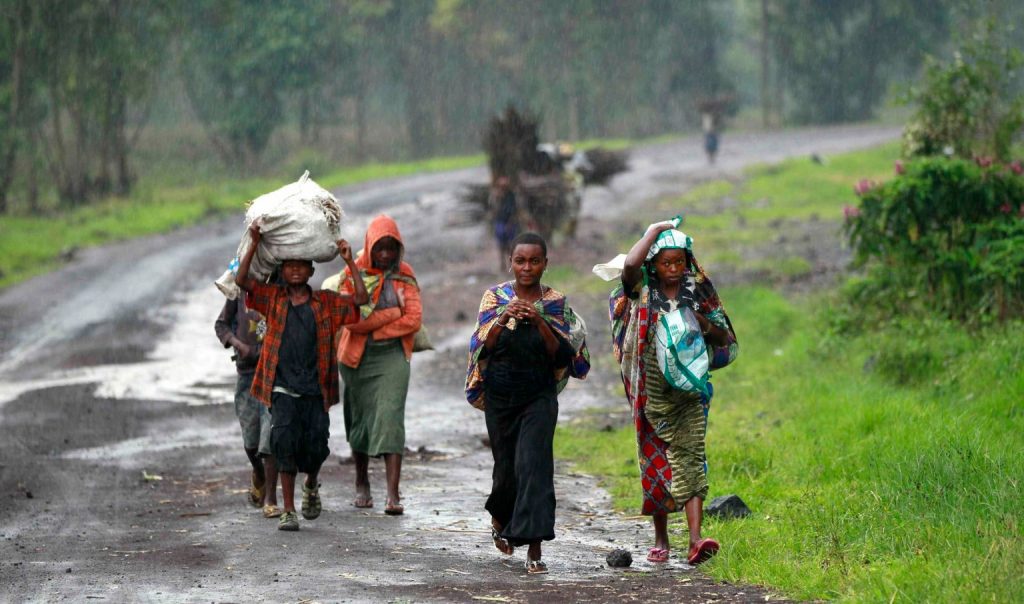ROME – Somewhere around the middle of this century, the Democratic Republic of Congo will become the third or fourth largest Catholic country in the world, depending on the ebbs and flows of demographic trends between now and then. As things stand now, it will be behind Brazil and Mexico and in a tight race with the Philippines for the third slot.
Congo is already the largest Catholic country in Africa, with around 35 million Catholics, but given the country’s surging population, it’ll more than double that total by mid-century, making it also easily the largest French-speaking Catholic nation in the world … well ahead of France itself, with a projected 49 million Catholics.
In other words, just in Catholic terms alone, Congo matters.
The DRC is also rich in natural resources. It accounts for 17 percent of the world’s diamond production, while its copper belt contains 34 percent of the world’s cobalt and 10 percent of its copper. North and South Kivu, in the eastern part of the country, are home to 60-80 percent of the global reserves of coltan, used in the manufacture of mobile phones, computers and other electronic equipment.
The Congo River alone is capable of producing a third of Africa’s potential hydroelectric power, while Lake Kivu contains enough methane and carbon dioxide to produce vast amounts of natural gas.
Estimates of total petroleum reserves in the country exceed five billion barrels and could reach up to 20 billion barrels, putting the DRC behind only Nigeria in Africa in terms of oil production and among the top ten globally. Part of the reason for the abundance is Congo’s sheer size – the country’s landmass is roughly equivalent to all of Western Europe.
Thus in strategic and economic terms, Congo matters too.
All this helps explain why it’s actually a big deal that Pope Francis said recently he wants to visit the Democratic Republic of Congo in 2022. If Congo, perhaps inspired and motivated by a papal visit, can begin to manage its internal chaos and dysfunction, it could be a Catholic powerhouse in the second half of the 21st century, helping to lead an African Catholic awakening with consequences for the church everywhere.
Francis revealed his hopes for a Congo trip in an Oct. 22 interview with Vatican journalist Hernán Reyes Alcaide, correspondent in Rome for the Argentine news outlet Télam, in which he also confirmed he plans to go to Cyprus and Greece in early December.
He then went on to mention several other possible trips farther down the line.
“For the moment I have in my mind two trips that I have not started yet, and those are the Congo and Hungary,” Francis said. “Also, I still have to pay back the bill for the trip to Papua New Guinea and East Timor,” he said, referring to a originally on his calendar for 2020 but suspended due to Covid restrictions.
Of all those potential outings, Congo could turn out to be the most significant in terms of Catholic fortunes.
To be clear, such chessboard logic almost certainly isn’t the reason Francis wants to go. This is a pope more inclined to think about today rather than 50 years down the line, and his trips often are driven by a sense of which hotspots could benefit from his presence right now.
Of the places he’s said he wants to go, Cyprus is lacerated by a division between rival Greek and Turkish parts of the island, Greece is the epicenter of the European refugee crisis, and Hungary under Viktor Orbán is increasingly at odds with Francis’s vision for a welcoming Europe rooted in solidarity rather than nationalist populism.
On that list of troubled destinations, Congo too deserves a grim pride of place.
In western Congo, members of the Batende and Banunu groups are locked in a deadly cycle of ethnic violence that’s left hundreds dead. In the east, numerous armed groups – according to some estimates, as many as 116 – operate with near-impunity, leaving thousands dead in recent years and creating a lawless zone in which the state exists in name only. A staggering 5.5 million Congolese are classified as internally displaced, and one million are registered as refugees and asylum seekers in 20 countries.
Congo is also home to the third-largest population of poor people in the world, trailing only India and Nigeria. Roughly 80 percent of the country’s population lives on less than $1.25 a day, the international standard for extreme poverty. The UN Human Development Index ranks Congo in the bottom 15 of nations in the world, and almost 13 million Congolese are considered to be in need of immediate humanitarian aid.
Globally, the DRC is the world’s premier example of a state with vast potential wealth squandered through a toxic combination of neocolonial exploitation from the outside and corruption, political chaos and intractable ethnic divides within.
All that undoubtedly lends a sense of urgency to Pope Francis’s desire to visit the country, which would mark his third foray into Africa.
Yet these two ways of sizing up, short-term and long-term, aren’t mutually exclusive. Should a papal visit stimulate even modest positive change in Congo, it could set the stage for a “Catholic moment” in the country, one with the potential to make Congolese Catholicism both a change agent domestically and a force to be reckoned with internationally.
If all papal trips are created equal, in other words, should Francis end up heading to Congo next year, that outing might be just a bit more equal than others.

